They knew the crowds would be big, but nobody expected quite so many people. On Rue Lepic, a narrow, cobbled climb that bends up into Paris’s Montmarte district, fans stood 10 deep on the pavement, tilting on their tiptoes to watch the men’s Olympic road race fly by.
More than half a million people gathered by the roadside in the French capital. The artist’s quarter, where tourists typically come for caricatures, carafes of red wine, and an unspoiled view across the city, was flooded with cycling fans. They shouted so loud, and so close to the peloton, that the riders could feel the air of their cries on their faces. It was a carnival in full swing. The organisers of the Tour de France, ASO, watched on with envy from their headquarters in the southwest of the city.
“That race in Montmartre struck us all,” the Tour’s route designer, Thierry Gouvenou, told The Athletic. “In our dreams, or in the dreams of our director, [Christian] Prudhomme, there was a desire to change the last stage a little bit.” The festival scenes from last August’s Paris Olympics inspired a “turning point”, Gouvenou explained. A plan was soon hatched. The Tour would get in on the fun.
This Sunday – 27 July – the Tour de France will celebrate the 50th anniversary of its first finale on the Champs-Élysées, and it’ll do so with a twist. Out goes the procession, the ceremonial jaunt into central Paris and nailed-on sprint finish, and in comes a new spectacle; less than a year after its star role at the Olympics, the kilometre-long hill of Rue Lepic – now known as the Côte de la Butte Montmartre – will return to pro cycling.
The Tour’s final stage will trace the climb three times, the last summit just 6km from the finish line, before the riders bomb down to their usual curtain closer on the Champs. It’s a route that promises late drama, jeopardy until the final pedal strokes, and fan delight on the streets of Paris.
“[The Olympics] made it possible to do things that seemed impossible,” said Tour director Prudhomme, unveiling the plans. But what do the riders think? After 20 days of racing, do they really want a spiced-up finale? Perhaps ASO were so preoccupied with whether they could stir the Tour’s Paris stage, they didn’t stop to think about whether they should.
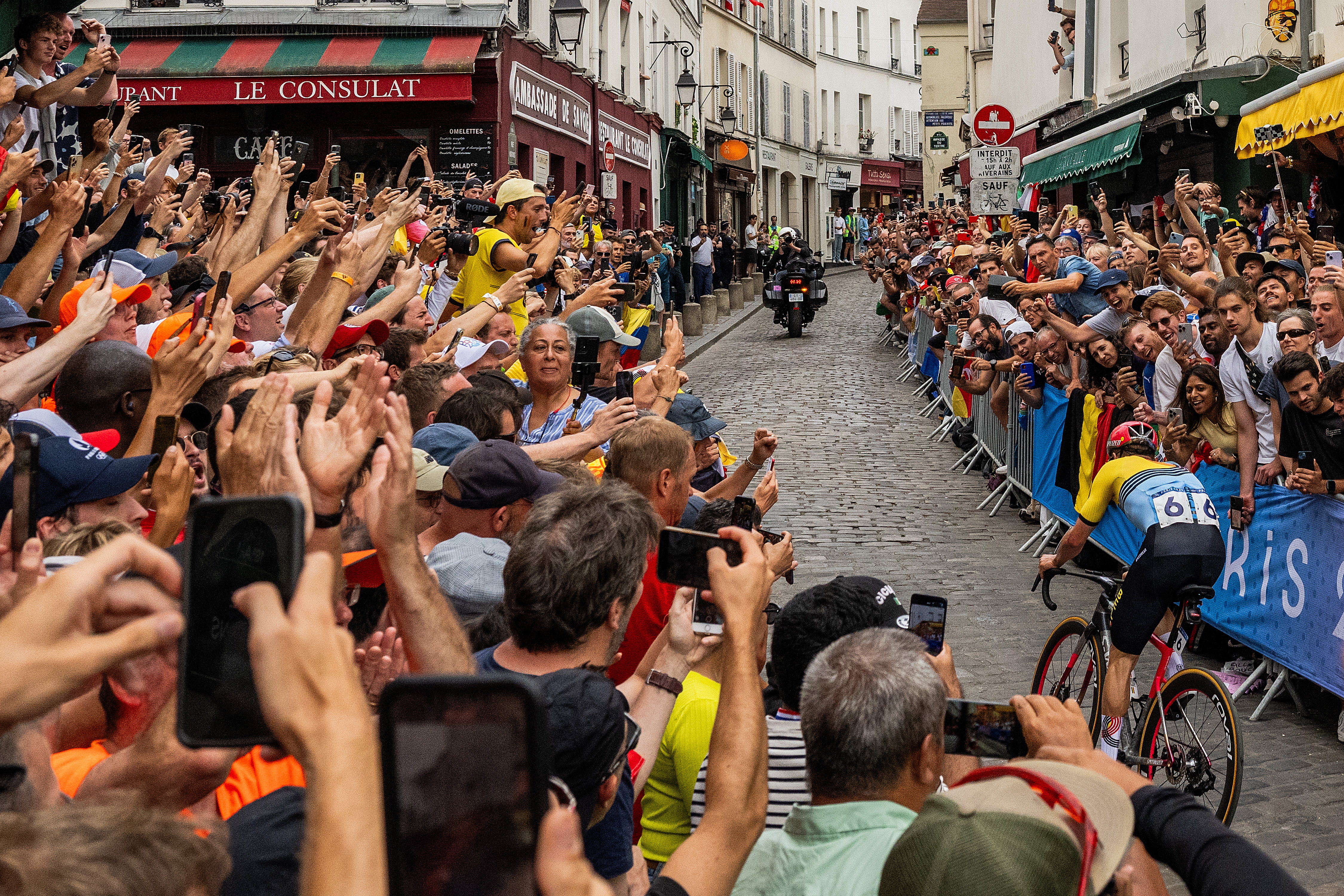
Over 500,000 fans watched the men’s Olympics road race in Paris last August.
(Image credit: Getty Images)
Remco Evenepoel holds fond memories of last summer’s Olympic road race. Today, his Soudal Quick-Step kit bears the spoils of his victory: a golden tint on his jersey collar, as well as the piping of his sleeves. With steep climbs and cobbled roads, the route was one that seemed written for the Belgian. So it came as a surprise in April when he came out against the Tour taking the same detour. “I don’t like it,” the Olympic champion said. “If ASO abandoned this idea, [the route] would be perfect. It’s better without Montmartre than with it.”
The latest race content, interviews, features, reviews and expert buying guides, direct to your inbox!
Evenepoel’s argument was that, with tired legs in the bunch, the battle for positioning into the Butte Montmartre might give way to chaos. Besides, the ceremonial finish had become tradition, a welcome sign-off spin for the pack.
“Don’t make it too complex,” Evenepoel said in the spring. Have his views changed at all in the months since? “[They’re] the same,” he tells Cycling Weekly in France. “I think the GC guys’ worst fear is losing their place [in the standings] because of that final. Imagine you’re in the yellow jersey or second place with a small margin, you just want to keep your place. It’s going to be a very hectic finale for everybody, and I think that’s something that nobody really likes for the last 20km of a Grand Tour.”
Still, with a resigned tone to his voice, he concedes: “We’ll probably have to race it and see how it goes.”
Côte de la Butte Montmartre (Rue Lepic)
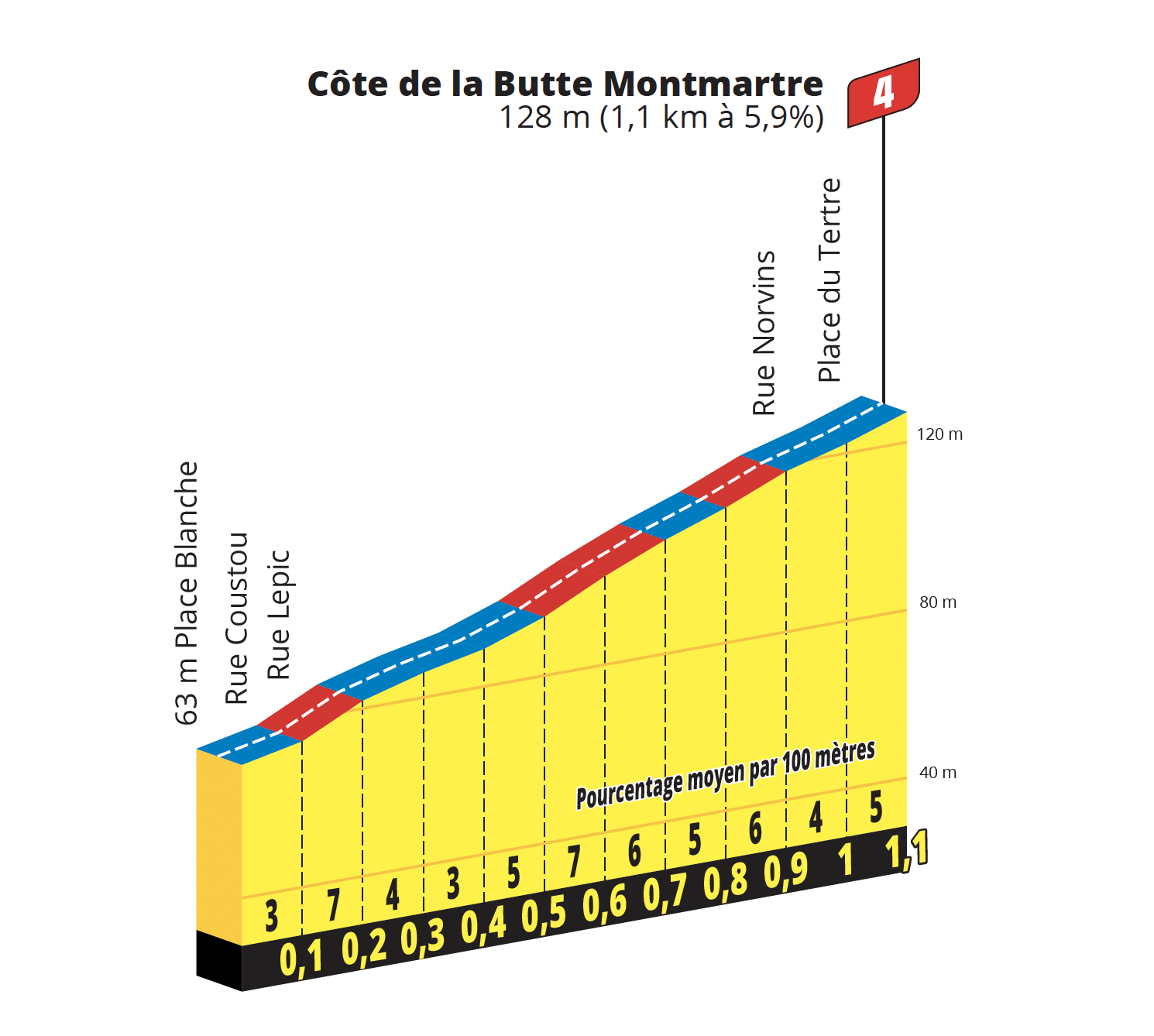
(Image credit: ASO)
Distance: 1.1km
Average gradient: 5.9%
Max gradient: 10%
Altitude: 128m
Climb category: 4
Strava KOM (800m segment): 1:31 (32.6kph) – set by Wout van Aert at the Olympics
Though Evenepoel will no longer contest the stage, having abandoned this year’s race, his fears are not unique among the GC riders. For two-time Tour winner Jonas Vingegaard, it’s the width of the climb – 10m at its narrowest, 14m at its widest – that lies at the source of concern.
“When they came to Montmartre [in the Olympics], there were only 50 riders left in the bunch,” the Visma-Lease a Bike rider says. “Now, when we do the Tour de France, we will be 150 guys fighting for positions on a very narrow climb.”
It’s a road that, more than 200 years ago, was laid for horse-drawn carts, not the roar of the Tour peloton. “It could end up being more stress than they [ASO] actually want to have,” Vingegaard adds.
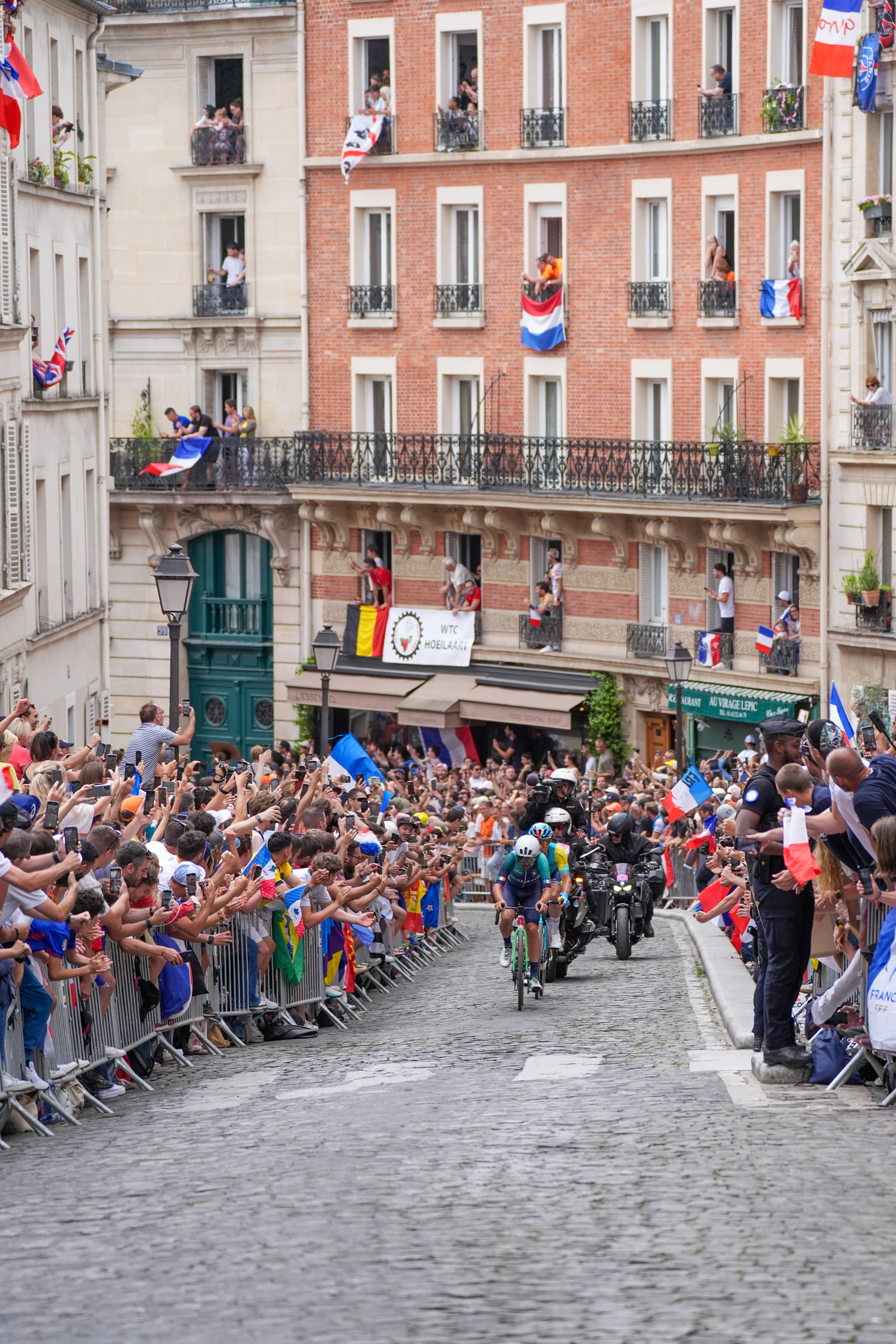
The Butte Montmartre is 10m wide at its narrowest.
(Image credit: Zac Williams/SWpix.com)
Over the past 50 years, the flat dash on the Champs-Élysées has become known as the unofficial sprinters’ world championships. Its roll call of winners includes Mark Cavendish, Marcel Kittel and most recently, in 2023, Jordi Meeus, all of whom cashed in their reward for surviving the mountains.
Now, for the second edition in a row – after last year’s time trial finale in Nice – the fastmen are set to be starved of their final-day fun. When Kittel first heard of the course change, he felt “pain in my sprinter’s heart”.
“If I was still a rider, I’d be quite disappointed that it won’t be a controlled sprint day anymore,” the German says. Kittel won twice on the Champs during his career, back to back in 2013 and 2014. The introduction of the Butte Montmartre, he expects, will make the day “a lot more difficult” for the sprint trains to control – but it won’t be impossible. “We have so many sprinters at the moment who could get over it and time it well,” Kittel says. “But it’s still going to be really, really difficult.”
One of those hoping to arrive in a fast finale is Lidl-Trek debutant Jonathan Milan, the winner of stages eight and 17. Asked what he thinks of the new route, the Italian flashes back a smile. “As a sprinter, I would like to have it like before,” he says, as if the answer is obvious. “But it’s making the race a bit more particular, maybe, a bit different, so it will be a bit of a question mark on that day.”
It’s this uncertainty that race director Prudhomme hopes will be “glorious” for fans. Is it enough for Milan to abandon his dream of a victory? “We will always look to arrive in a bunch sprint, but for sure there will be many attacks” he says. “You never know how it will go.”
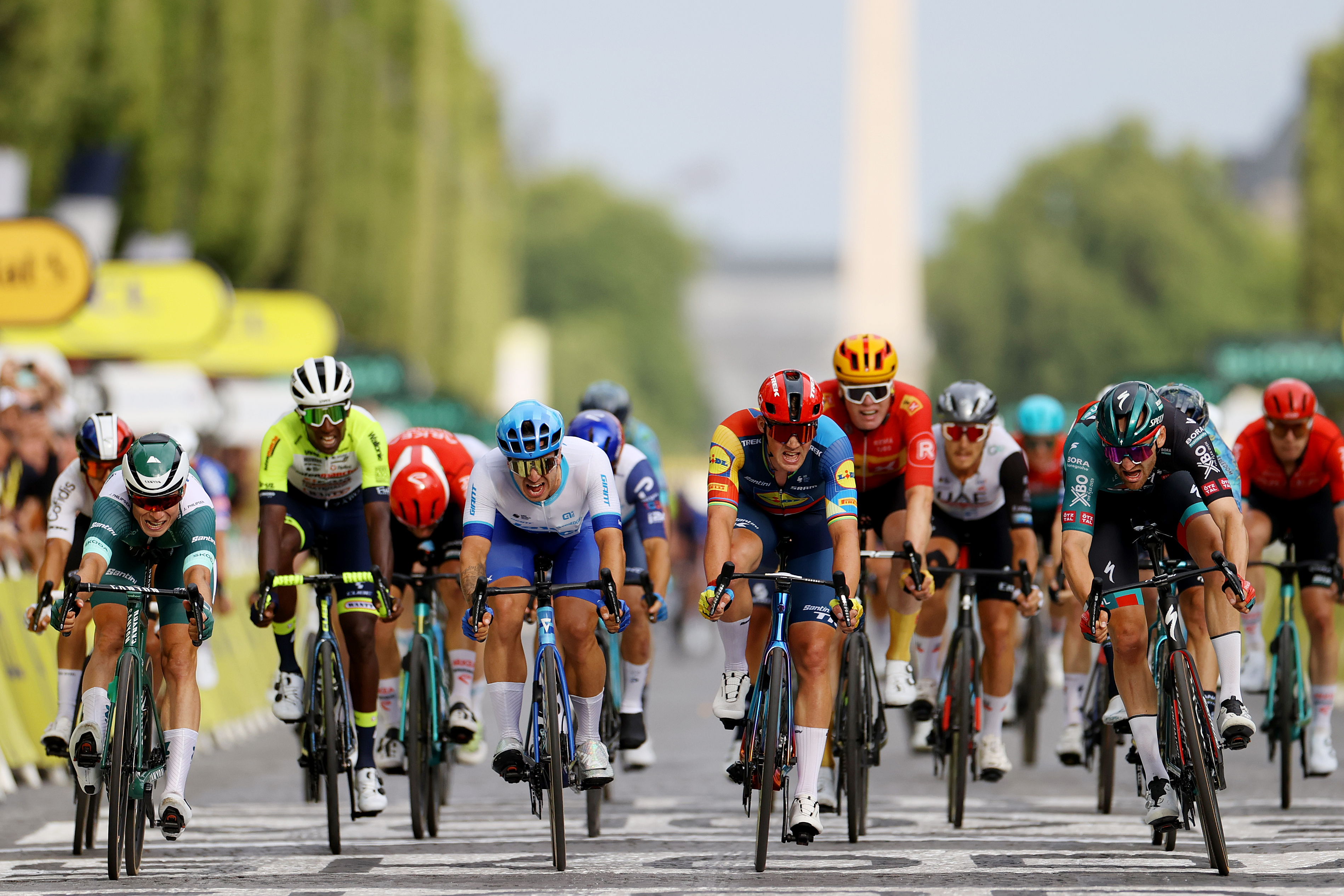
Jordi Meeus (right) won the last bunch sprint on the Champs-Élysées in 2023.
(Image credit: Getty Images)
Given the tension, there’s unlikely to be any clinking of champagne flutes on the road into Paris on Sunday, or posing for the moto-mounted photographers. There will be no jovial pootle, but rather an underlying nervousness, which will build among the riders as they head towards Montmartre.
They’ll race past the sex shops of Pigalle, beneath the Moulin Rouge, and swing onto Rue Lepic, their bones rattling on the cobbled Butte. There, they’ll find themselves wedged between two walls of noise. Attacks will fly, wheels will touch, and costly mistakes will almost certainly be made. It’s guaranteed to be a show for the fans – memories of the men’s and women’s Olympic road races stand as proof of that – but, for the riders, the anxiety remains unwanted.
Aware of the criticism, Prudhomme stands firm. “When Henri Desgrange [the founder of the Tour in 1903 – ed] first included the Tourmalet and the Pyrenees in the route in 1910, not everyone was thrilled,” the race director says. “Now they are part of the legend of the Tour. We must continue to build on that legend.”
Just last week, too, Prudhomme hinted that there could be more final-day mix-ups in the future, saying 2024’s finish in Nice, outside of Paris, “won’t be unique“.
What we know for certain is that this Sunday’s stage, whether the riders like it or not, will be a race day. The Tour will have its Olympic frenzy.
Stage 21 in detail
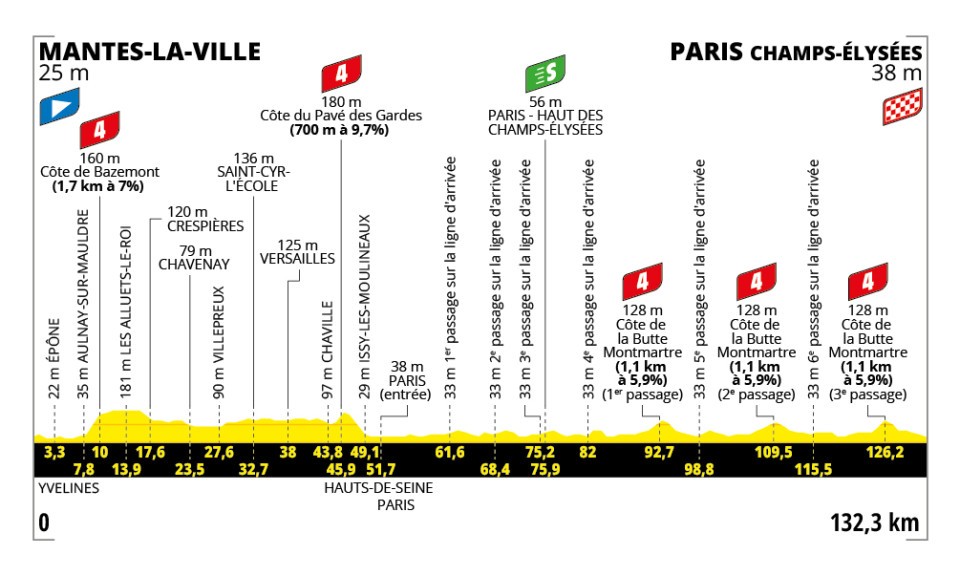
(Image credit: ASO)
Mirroring last summer’s Olympic road race route, stage 21 of this year’s Tour de France heads into Paris’s punchy north, for three ascents of the Butte Montmartre (Rue Lepic).
The first summit comes with 40km to go, and follows three laps of the traditional Champs-Elysées loop. Over the climb, the peloton will then pass in front of the white-stoned Basilica of Sacré Cœur, before returning to the Champs, circling the Arc de Triomphe, and repeating the circuit twice more.
The final ascent in Montmartre will be crested with exactly 6.1km to go, and with it, the peloton will tick off the last categorised climb of the race. The winner is expected to cross the finish line around 18:30 UK time.
At 132.3km, the final day brings one of the shortest road stages of the race and is classified as a ‘flat’ parcours by the organisers. Still, its 1,100m of elevation gain make it twice as hilly as the last time the Tour finished in Paris in 2023.
What the peloton thinks
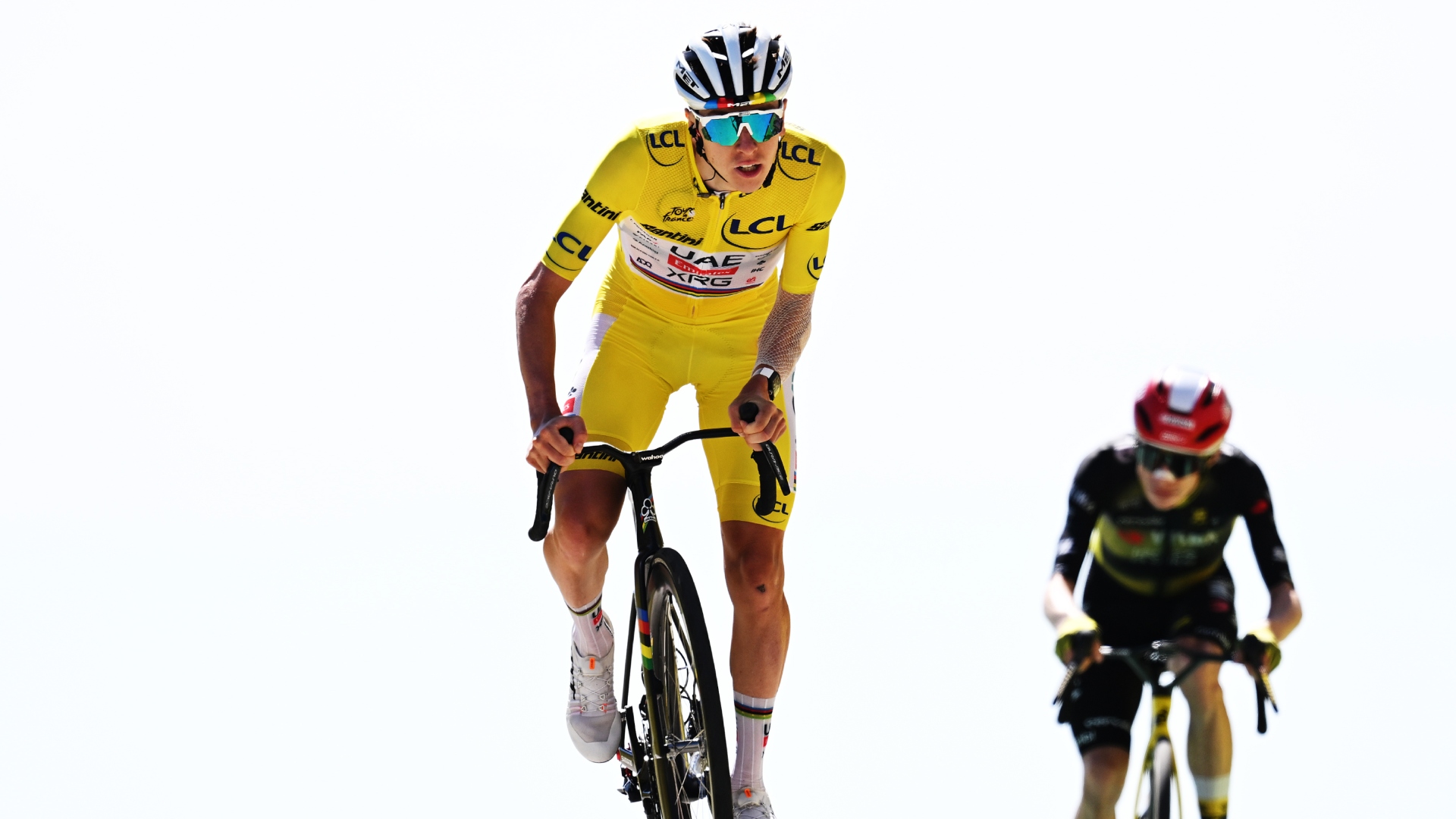
(Image credit: Getty Images)
Tadej Pogačar (UAE Team Emirates-XRG) – in pre-Tour press conference:
“When I heard the last stage is going to be on the parcours of the Olympics, the first thing on my mind was that not a lot of riders will be happy. For me, personally, I don’t see too much difference, just more stress again. We don’t know how it is going to be with all the travel, and then you race another Classics stage with full stress… I think we will have to be focused.”
Wout van Aert (Visma-Lease a Bike) – to Sporza:
“I’m not really a fan of it. I think it’s going to be a dangerous stage. The course is obviously something that suits me, especially when that last climb is 6km from the finish – that opens up opportunities for Classics riders like me. But it ignores the fact that we arrived there during the Olympics with a peloton of 50 riders. Now it’s an entire Tour peloton, where many classification riders still have something to defend. I expect chaos. I think it’s a shame that we’re going to seek that out.”
Oscar Onley (Picnic PostNL) – to Cycling Weekly:
“I think it can be something quite exciting. Obviously, it’s normally a big celebration and a bit of a processon into Paris, and probably this year it won’t be that. It adds a different element and it’s something different. I don’t see why not. It becomes an extra race day, but that’s why you’re here: to race 21 stages.”
This feature originally appeared in Cycling Weekly magazine on 24 July 2025. Subscribe now and never miss an issue.
Explore More